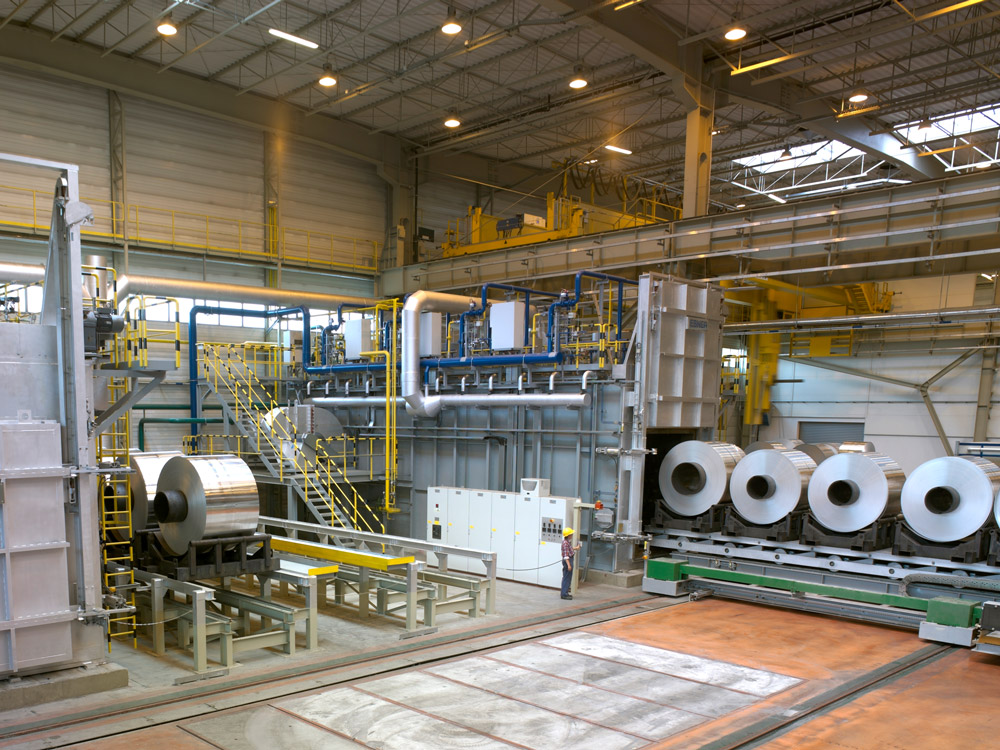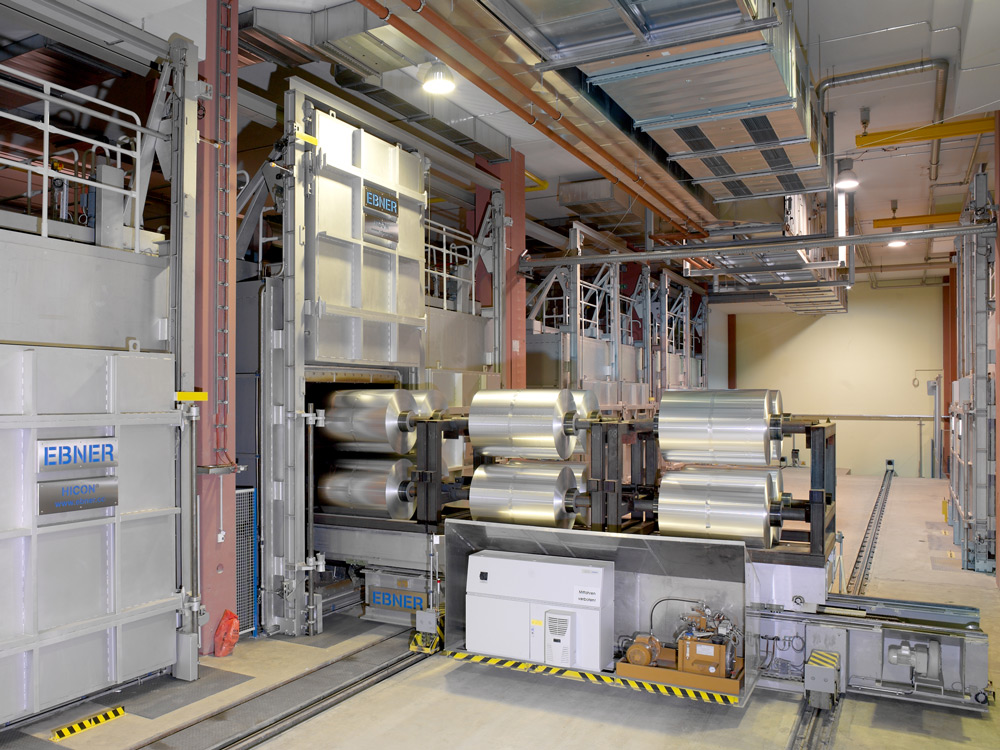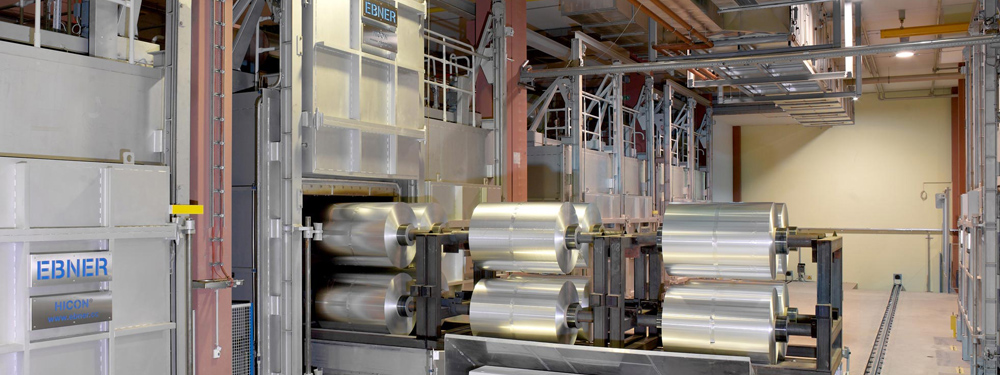EBNER HICON Batch-type Furnaces for Aluminum Strip and Foil Coils
HICON batch-type furnaces for strip and foil coils.
The main criterion here is whether the material is to be annealed in air or process atmosphere. All alloys that tend to discolor due to the formation of manganese oxide (like alloy AA 3004, for example) have to be annealed in process atmosphere.
The same applies to all other alloys where the thinnest possible layer of oxide is required (e.g. to extend the service life of deep drawing dies), and also to clad strip (e.g. for manufacturing car radiators).
The HICON batch-type furnace reduces temperature scatter to a minimum throughout the entire charge, even as it keeps heating-up times as short as possible (e.g. for anneal to temper: Δt less than ± 3 °C at the end of soaking). The gas-tight design of the batch furnace enables trace oxygen contents of less than 0.05 %v/v.
Foil coils are processed with a special annealing program that allows the rolling lubricant to evaporate without trace so that sticking is prevented and the necessary surface cleanliness is guaranteed. Anneals in process atmosphere provide the advantage that the necessary surface cleanliness is achieved in the shortest time because the atmosphere promotes evaporation of the rolling lubricant, reducing the risk of the oil cracking on the foil surface.
HICON batch-type furnaces are distinguished by the following features:
- Rapid, even temperature distribution across the strip coil, due to the symmetrical arrangement of the jet nozzle system
- Clean coil surface due to oxygen-free workload space provided by the tightly-sealed furnace design
- Optimized and sealed central atmosphere cooling system to quickly cool coils in the furnace
- Transport systems developed in-house to transport charges into and out of the furnace
The facility can be implemented to comply with the standards required by the automotive and aerospace industry. These standards are primarily AMS 2750 (SAE Aerospace) in the aircraft industry and CQI-9 (AIAG) for the automotive industry





